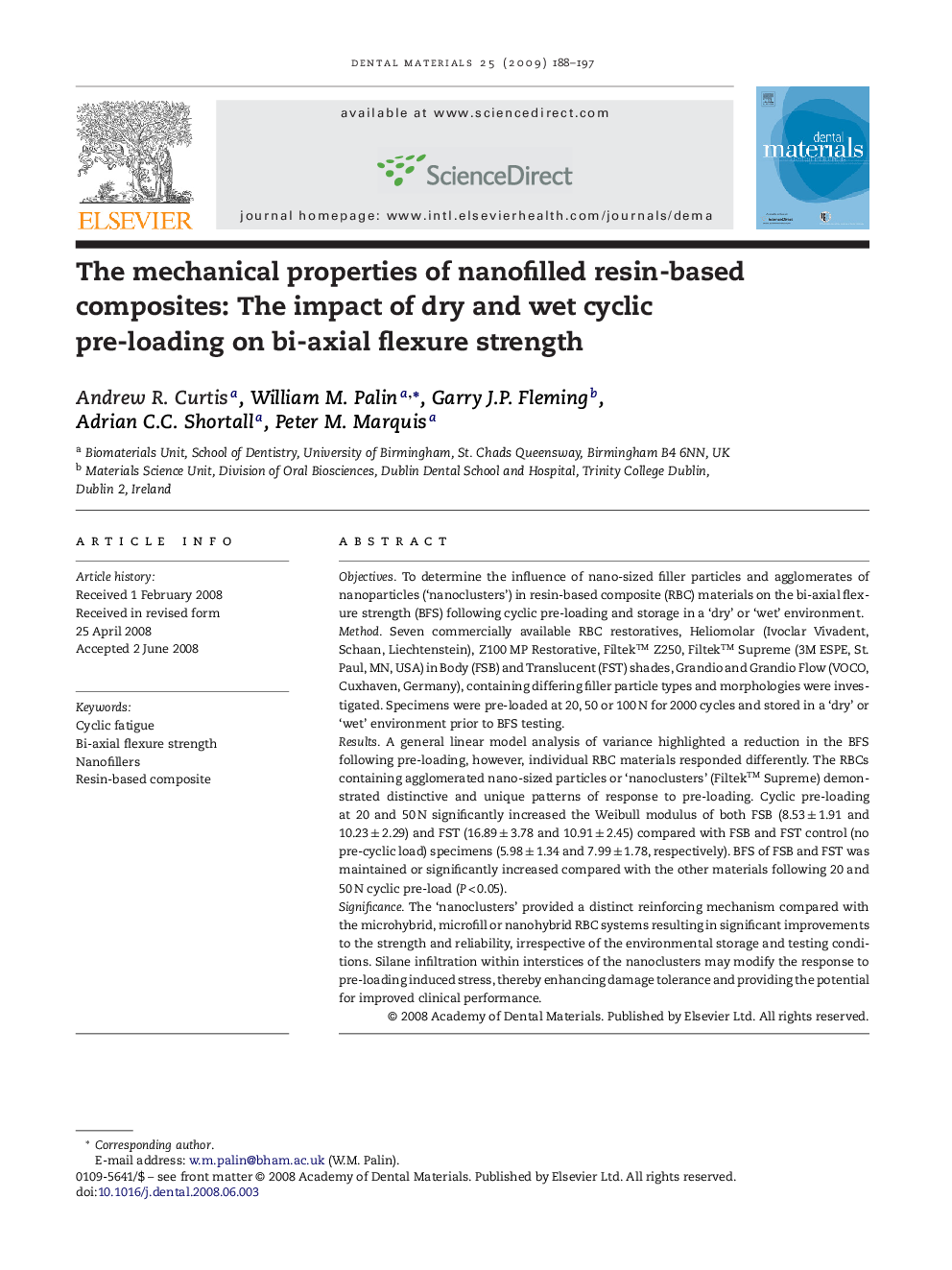| کد مقاله | کد نشریه | سال انتشار | مقاله انگلیسی | نسخه تمام متن |
|---|---|---|---|---|
| 1423072 | 986477 | 2009 | 10 صفحه PDF | دانلود رایگان |

ObjectivesTo determine the influence of nano-sized filler particles and agglomerates of nanoparticles (‘nanoclusters’) in resin-based composite (RBC) materials on the bi-axial flexure strength (BFS) following cyclic pre-loading and storage in a ‘dry’ or ‘wet’ environment.MethodSeven commercially available RBC restoratives, Heliomolar (Ivoclar Vivadent, Schaan, Liechtenstein), Z100 MP Restorative, Filtek™ Z250, Filtek™ Supreme (3M ESPE, St. Paul, MN, USA) in Body (FSB) and Translucent (FST) shades, Grandio and Grandio Flow (VOCO, Cuxhaven, Germany), containing differing filler particle types and morphologies were investigated. Specimens were pre-loaded at 20, 50 or 100 N for 2000 cycles and stored in a ‘dry’ or ‘wet’ environment prior to BFS testing.ResultsA general linear model analysis of variance highlighted a reduction in the BFS following pre-loading, however, individual RBC materials responded differently. The RBCs containing agglomerated nano-sized particles or ‘nanoclusters’ (Filtek™ Supreme) demonstrated distinctive and unique patterns of response to pre-loading. Cyclic pre-loading at 20 and 50 N significantly increased the Weibull modulus of both FSB (8.53 ± 1.91 and 10.23 ± 2.29) and FST (16.89 ± 3.78 and 10.91 ± 2.45) compared with FSB and FST control (no pre-cyclic load) specimens (5.98 ± 1.34 and 7.99 ± 1.78, respectively). BFS of FSB and FST was maintained or significantly increased compared with the other materials following 20 and 50 N cyclic pre-load (P < 0.05).SignificanceThe ‘nanoclusters’ provided a distinct reinforcing mechanism compared with the microhybrid, microfill or nanohybrid RBC systems resulting in significant improvements to the strength and reliability, irrespective of the environmental storage and testing conditions. Silane infiltration within interstices of the nanoclusters may modify the response to pre-loading induced stress, thereby enhancing damage tolerance and providing the potential for improved clinical performance.
Journal: Dental Materials - Volume 25, Issue 2, February 2009, Pages 188–197